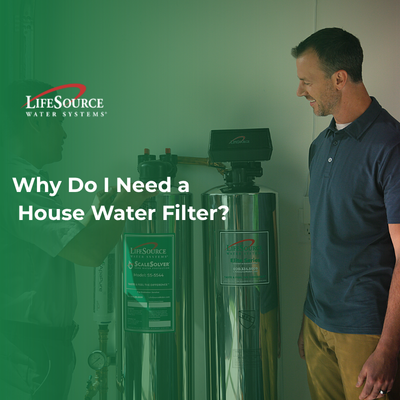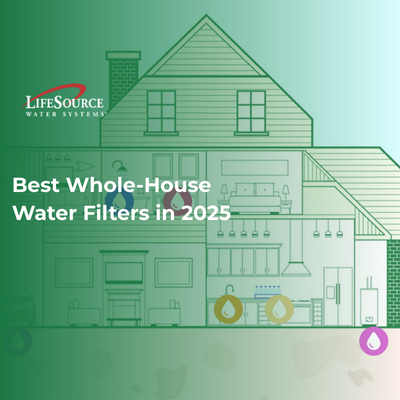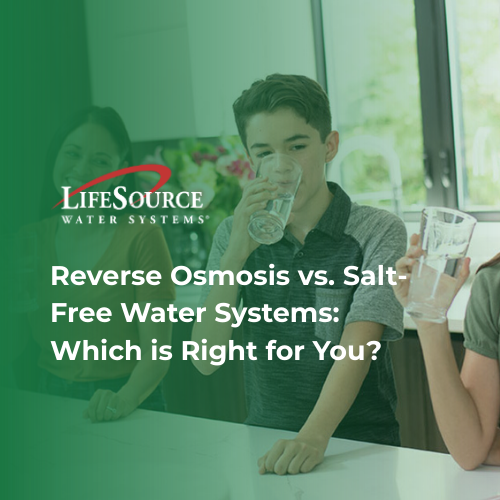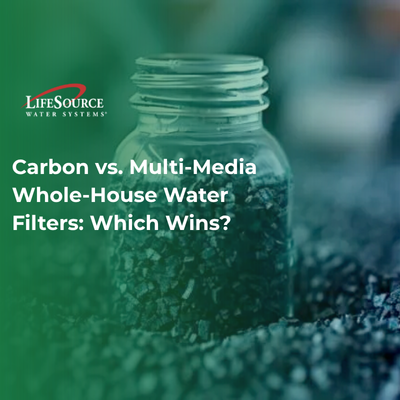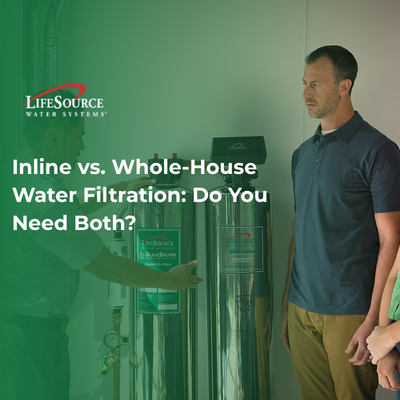
Feel Good. Do Good.
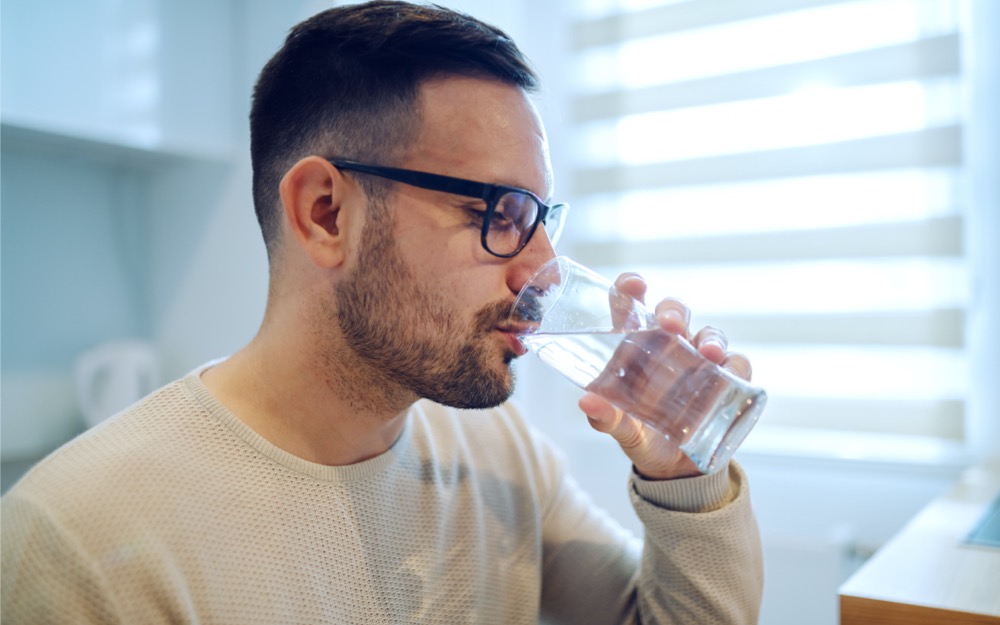
You can't have a home without water. We drink and use water every day for drinking, cooking, bathing and laundry. The quality of your water has a big impact on your daily life. Bad tasting or smelling tap water is unappealing to drink. Chlorinated tap water can dry out your skin and make your hair lose its shine. Your water quality even affects how well your cleaning products work on dishes and laundry.  Now you can drink refreshingly filtered water while preserving our waterways.   
Under the sink and counter-top filters are only able to filter so much water at a time and are limited to kitchen use. Salt-free whole house water systems filter your water before it enters your home. This allows you to drink great-tasting water straight from any faucet in your home. You also get to enjoy the full-body benefits of filtered water on your skin and hair. This eliminates your need for bottled water and reduces single-use plastic waste. Not having to rely on bottled drinking water also saves water! It takes more water to make a single plastic water bottle than the amount of water that the same bottle holds. With filtered, great-tasting water flowing from every faucet, it's easy to take the water you love anywhere with a refillable water bottle.   
Home water treatment technology is not new, but modern advances have made the process vastly more eco-friendly.  Older water softener technology “softens” your water by replacing vital minerals in our water with salt.
City water treatment facilities aren't able to remove salt from water. Desalination (the process of removing salt from water) is expensive and uses huge amounts of fossil fuels. This means that the wastewater coming from homes with water softeners can't be reused or recycled for irrigation or farming. With modern advancements, you can now reduce the effects of hard water in your home without adding salt to the water supply. There are great salt-free water softener alternatives that condition water to prevent excess minerals from sticking to surfaces. This means you can retain beneficial minerals like calcium and magnesium without worrying about mineral deposits on appliances.
The same products we use to clean our homes contain chemicals that are toxic to our bodies and the environment. This may seem counter-intuitive but strong bleaches, air fresheners, aerosol sprays, and many furniture cleaners can contain volatile organic compounds (VOCs) and other toxic ingredients. VOCs are harmful gases released into the air that can irritate the lungs, eyes, nose, and throat. According to the American Lung Association, "VOCs and other chemicals released when using cleaning supplies contribute to chronic respiratory problems, allergic reactions, and headaches." Long term health effects from some VOCs can include damage to organs and the central nervous system. When we use these harsh cleaning products they get into our waterways and can have negative impacts on wildlife and our eco-system.
Luckily, cleaning your home doesn’t have to involve using toxic and potentially harmful chemicals. There’s a whole range of eco-friendly, non-toxic cleaning products available for you to try and love. Reduce your exposure and protect the environment by using eco-friendly cleaning products. Some companies also offer refillable cleaning products. This cuts down the amount of single-use plastic needed for packaging and helps reduce environmental pollution.
Next time you need to replace a home appliance, opt for one that is energy efficient. More and more brands are offering energy-efficient appliances to help you save energy and money in your home. You can find energy-efficient washers and dryers, refrigerators and dishwashers. These appliances are designed to use the minimum amount of energy required and not use up excess energy. Energy-efficient appliances reduce your home's contribution to air and water pollution by using less natural resources - like water, oil, coal, or natural gas. Water, soil, and air pollution are reduced when you have energy-efficient appliances. Finding eco-friendly, energy-efficient appliances has never been easier. Simply look for an Energy Star logo when shopping. 
Lowering your home's carbon footprint is easy to do with appliances, fixtures, and technology designed to help you have an eco-friendly home. Installing low flow showerheads and toilets is an easy way to save water. You can preserve energy with a smart thermostat that only heats or cools your home as necessary. If you aren't in the market to replace appliances, other easy fixes include using energy-efficient light bulbs, using smart power strips, and re-chargeable batteries.
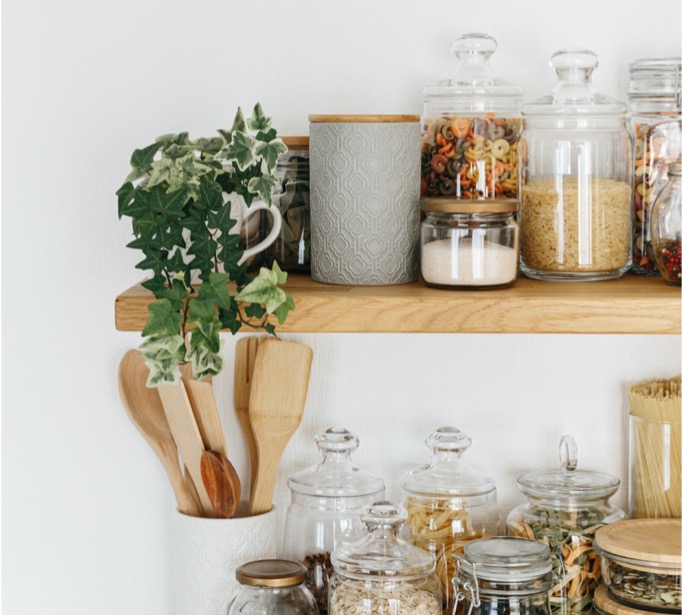
This may feel like a big task, but every step toward using less plastic in your home goes a long way toward protecting our environment. Plastic is one of the biggest forms of pollution in the world. Plastic is used to create a vast majority of products, appliances, and things we use every day. Plastic can be found in almost everything. From the plastic food packaging to furniture, clothes (polyester, nylon, and acrylic), toys, electronics, and bedding. This is worrying because plastic never fully deteriorates. Once created, plastic lasts forever. Think of all the plastic sitting in our landfills and oceans right now. Over time, this plastic deteriorates until it is so small it becomes microscopic. The plastic eventually becomes so small it can be unwittingly digested by marine life. Scientists have already found microscopic plastic present in the bodies of fish and sea salt. 
What’s even more disturbing is that according to the Environmental Protection Agency (EPA), in 2017 only 8.4% of all plastic got recycled. Recycling plastic is one of the best ways to prevent it from ending up in our environment and food chain. By reducing your use of single-use plastic and buying products made from recycled materials, you're ensuring less plastic pollutes our soil and waterways.
It can feel overwhelming (near impossible) to cut out plastic entirely from our daily lives. It's easier to set smaller, consistent goals for your home and family. You can start by using less single-use plastic in your kitchen. This means using glass containers, waxed parchment paper, and other re-usable storage methods for food leftovers and storage. Avoid buying products in plastic packaging. Resist the urge to use plastic or Styrofoam plates and plastic cups. Even something as basic as toilet paper can be an opportunity to use less plastic. 
Check labels! Try to buy products made with recycled paper and plastics. Once you start, it's hard to stop. You'll soon realize just how pervasive plastic is in our daily lives. Think of using less plastic as a game. Are there new creative ways for you and your family to avoid using plastic? 
When you do buy plastic items, make sure they are bisphenol-A (BPA) free.  BPA has been found to have negative effects on our endocrine system - especially in children. The endocrine system helps regulate your thyroid and adrenal glands.  And of course, make sure you have a clear recycling process set up in your home that makes it super easy. 
It’s true, they don’t make things the way they used to.  Vintage shopping is more than a hobby, it’s a great way to reduce waste. Out of the 12.2 million tons of furniture and furnishings that were generated in 2017, the EPA reports that 80.2% ended up in landfills. 
Buying vintage pieces adds major design value and can set your interior look apart. And it's true what they say, every style comes back around. With so many styles and design elements to choose from when decorating your home, buying vintage has never been more appealing. It's also a great way to reduce waste through reuse. Rather than letting that amazing vintage lamp end up in a landfill, it can be a new character piece in your guestroom! When you buy vintage, it reduces the amount of new waste created. Buying vintage doesn't mean your home can't look modern. Take an older frame and updated it with modern fabric and finishes. Reupholstering furniture is a great way to reuse and create a one of a kind piece. Updating vintage furniture guarantees no one will have that same lounge chair, adding personal sentiment and value to your home.
But don't worry, if you can't find your style in vintage stores, many companies use recycled and non-toxic glues and finishes.
Hopefully, these tips inspire you to make eco-friendly changes (big and small) in your home. When you focus on making your home better for the environment, you're also creating a healthier and nourishing environment for the ones you love.


